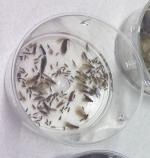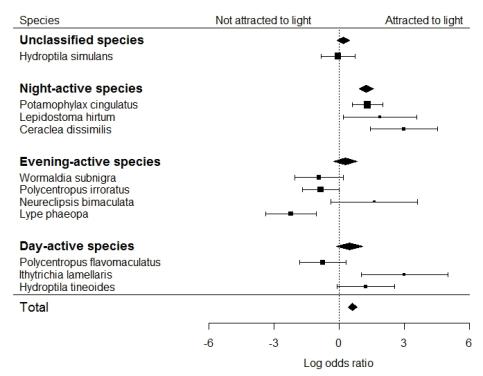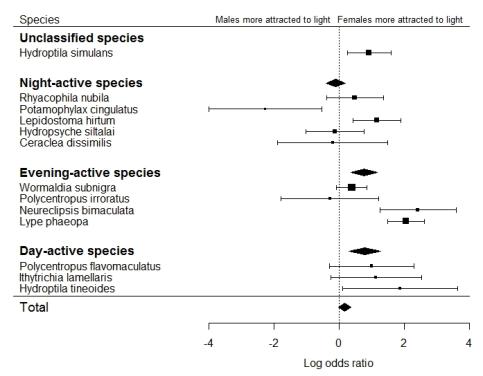Results

General information
In total, 131 species were identified and 13 of those occurred in all surveys. Almost 100 000 individuals were analysed. Three species consisted of more than 10 000 specimens each, and 44 species consisted of more than 100 specimens. 34 species were found in only one of the five surveys


Trichoptera was attracted to light
Trichoptera were in general attracted to light. When breaking it down into diurnal activity, night-active species showed a significant attraction to light. Evening-active and day-active species had a tendency to be attracted to light.
The figure describes the meta-analysis of trap preference based on all surveys and excluding dominant species. If the species preferred light to the passive trap, the values were positive. A negative value showed the species having a higher ratio in the passive trap.
The diamond shapes represents summaries. For activity classes the summary was made on all species, not just those presented. The species examples were those that were present in all five surveys.

Females were more attracted to light
The meta-analysis showed that over-all, there was a tendency for females to be more attracted to light than males. Night-active species stood out as having no difference between sexes when it came to light attraction. Females of evening-active and day-active species were significantly more attracted to light than males.
The figure describes the meta-analysis of sex ratio. When females were more attracted to light than males, the values were positive. A negative value showed males being more attracted to light than females.
The diamond shapes represents summaries. For activity classes the summary was made on all species, not just those presented. The species examples are the species that were present in all five surveys.
Responsible for this page:
Director of undergraduate studies Biology
Last updated:
05/04/17
